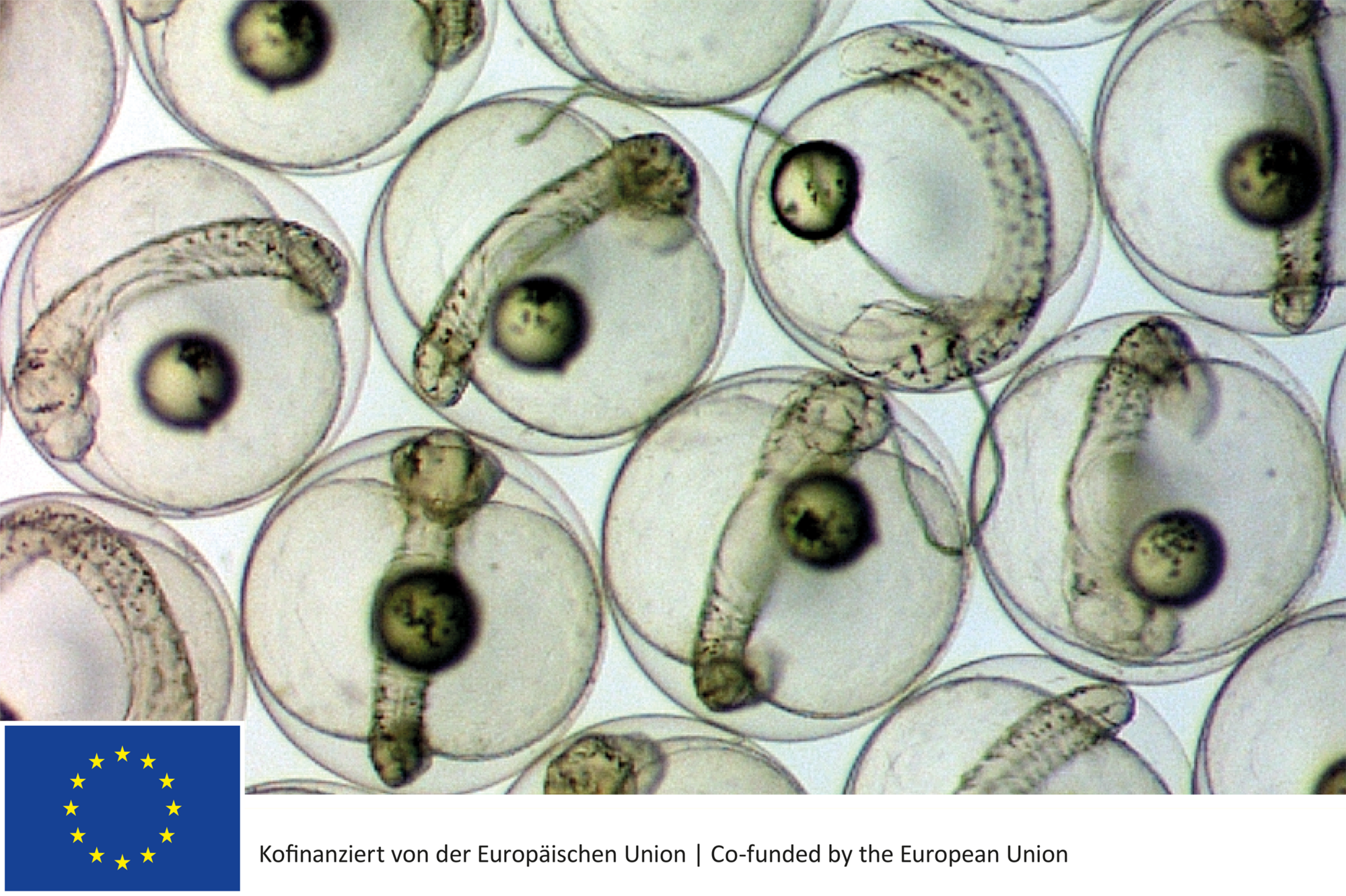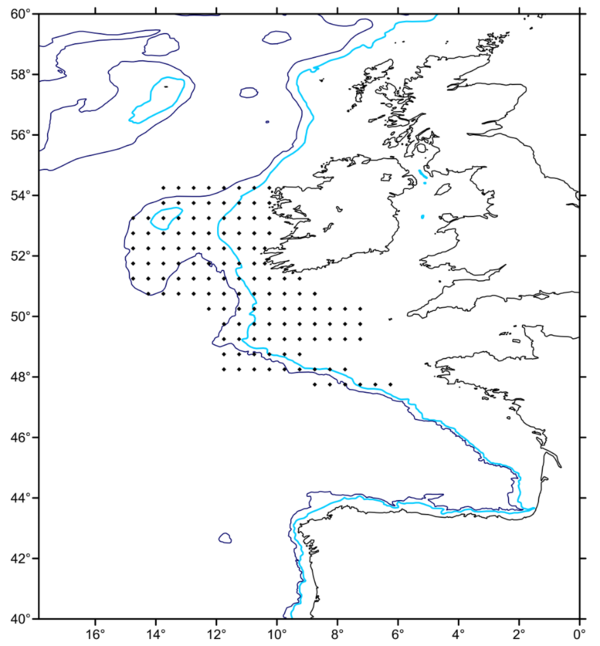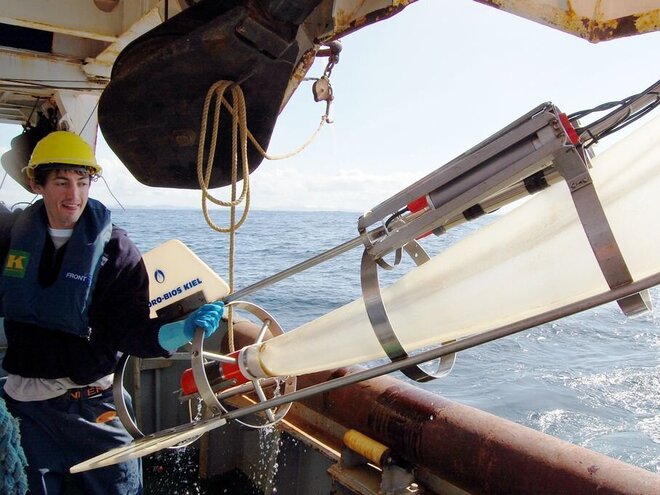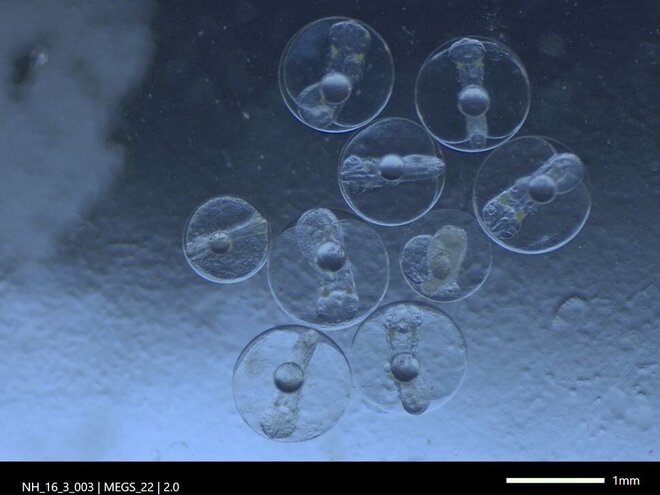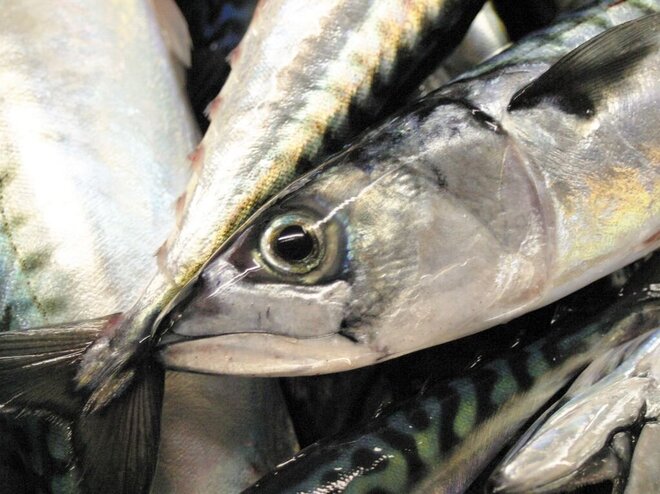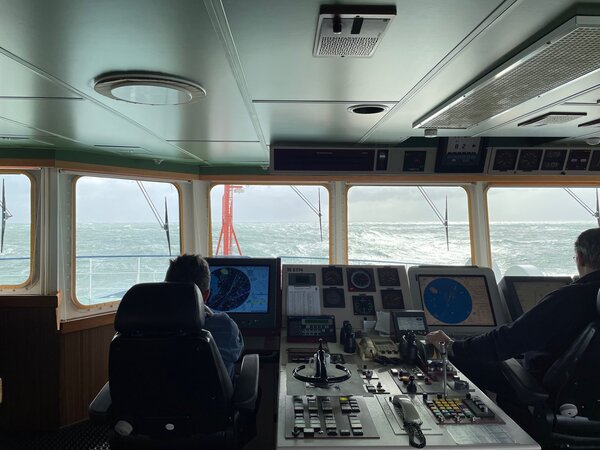Why we are searching for eggs in the Atlantic Ocean (MEGS)
The International Mackerel Egg Survey (MEGS) in the North-East Atlantic.
A necessary element for sustainable stock management of commercially important fish species is the collection of data on the stock size of the respective fish species. Of particular importance is the assessment of the size of the spawning biomass, i.e. the proportion of a fish population that reproduces in a given year.
Background and objectives
The North-East Atlantic mackerel (Scomber scombrus) is one of the most important fish stocks for European fisheries. The central task of the survey is to determine its spawning biomass. It is estimated by determining the concentration of freshly spawned eggs and the fertility of the female animals and their proportion of the total stock. Due to the enormous temporal (January-August) and spatial (Gibraltar to Faroe Islands) expansion of the mackerel spawning activity, this survey has only been carried out every third year since the 1970s. Since then, the survey has provided a reliable index of the size of the mackerel stock.
Since the 1990s, the survey has also provided an index for the stock size of horse mackerel (Trachurus trachurus) or jack mackerel - another fish species of importance to European fisheries.
Nine European nations (Portugal, Spain, United Kingdom, Ireland, Netherlands, Norway, Faroe Islands, Denmark, Germany) are participating in this survey, which is coordinated by the International Council for the Exploration of the Sea (ICES). Research vessels as well as commercial fishing vessels which were chartered for the survey spend a total of more than 300 days at sea.
Since the 1980s, we have been participating in this survey with our research vessels and compile the data collected for Germany under the European Data Collection Framework (DCF) as a contribution to the International Mackerel Egg Survey (MEGS).
All this information is used within ICES to provide scientific advice on catch levels.
Approach
In the spawning areas of the monitored species, at least one plankton sample is taken in selected statistical area units (so-called ICES rectangles) by means of a vertical haul with the plankton fishing device "Nackthai" (= a modified "Gulf" plankton sampling gear). Coverage of the entire spawning season and spawning area can only be achieved through international cooperation, which means that participating countries must allocate areas and time periods among themselves. In addition, targeted catches of adult mackerel in the spawning areas are made to determine the fertility of the mackerel. These catches also provide information on the length, age, sex and maturity composition of the adults.
The fish eggs are sorted and identified from the samples directly on board during the surveys. In addition to external characteristics, the species identification is based on the size of the egg diameter and on the size of the oil droplets, which the eggs of both species do have and which probably serve as a kind of swimming aid.
However, for the main objective of the survey, the estimation of the stock size of the mackerel, it is not sufficient to count just the number of freshly spawned mackerel eggs in the ocean. Knowledge on the average amount of eggs an individual female produces on average in her body is necessary. With this knowledge, it is possible to divide that average by the number of freshly spawned eggs to get the number of spawning females. That is the the reason why we do fishing hauls to get samples to determine the fertility of the mackerel. We also use these catches to determine the sex ratio. These data enables us to estimate the size and weight of the spawning stock, known as the spawning biomass.
Each participating country provides only one piece of the puzzle, which is then processed with German participation in an ICES working group to yield a value for the total spawning biomass. This value is then used in the stock assessments and is of particular importance as it is collected independently with regard to commercial fisheries. Other input data for these stock assessments include the official mackerel landing quantities of the individual fishing nations as well as data from scientific observers on board of commercial fishing vessels (lengths, weights, age structure). In the end, the responsible ICES working group recommends a maximum total catch for the north-East Atlantic mackerel stock, which forms the basis for fishing quotas.
Links & Downloads
- ICES Working Group on Widely Distributed Stocks (WGWIDE)
- ICES Working Group on Mackerel and Horse Mackerel Egg Surveys (WGMEGS)
- Sea Blogs - Blogs describing expeditions to the North Sea, the Baltic Sea and the Atlantic
Contact person

- Phone
- +49 471 94460 117
- jens.ulleweit@thuenen.de

![[Translate to English:] [Translate to English:]](/media/_processed_/7/1/csm_IMG_7977_large_1defaf5de1.jpg)

